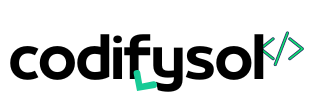High-Performance Coding: Rust vs Go vs C++
High-performance coding is crucial in today’s technology landscape, enabling developers to create efficient and scalable applications.
The choice of programming language plays a significant role in achieving high-performance coding. In this article, we will compare three popular languages: Rust, Go, and C++.

These languages are widely used in systems programming and are known for their performance capabilities. We will explore their strengths and weaknesses to help you decide which one is best suited for your next project.
Key Takeaways
- Understanding the importance of high-performance coding.
- Overview of Rust, Go, and C++ programming languages.
- Comparison of their performance capabilities.
- Guidance on choosing the right language for your project.
- Insights into the strengths and weaknesses of each language.
Understanding High-Performance Programming
As technology advances, the need for high-performance programming that balances speed, memory usage, and scalability has become increasingly important. High-performance coding is not just about writing code that executes quickly; it’s also about ensuring that the code uses system resources efficiently and can scale to meet growing demands.
What Makes Code “High-Performance”?
Code is considered “high-performance” when it achieves a balance between execution speed, memory efficiency, and the ability to scale. This balance is crucial for applications that require fast data processing, such as real-time analytics, gaming, and scientific simulations.
Critical Factors: Speed, Memory Usage, and Scalability
Speed is a critical factor, as faster code can process more data in less time. Memory usage is equally important, as inefficient memory use can lead to performance bottlenecks. Finally, scalability ensures that the application can handle increased load without a significant drop in performance. Optimizing these factors often involves a trade-off, and the best approach depends on the specific requirements of the application.
The Evolution of Systems Programming Languages
Systems programming languages have evolved remarkably, from low-level assembly codes to high-level languages like C++, Rust, and Go. This evolution reflects the ongoing quest for improving both safety and performance in systems programming.
From Assembly to Modern Languages
The journey began with assembly languages, which provided direct hardware manipulation but lacked safety features and were cumbersome to use. Modern languages have addressed these issues:
- C++ introduced object-oriented programming and template metaprogramming, enhancing performance and code reusability.
- Rust focuses on memory safety through its ownership system and borrow checker, ensuring safe concurrency without sacrificing speed.
- Go simplifies systems programming with its concurrency model and garbage collection, aiming for efficient development and execution.
The Need for Both Safety and Speed
In systems programming, both safety and speed are crucial. Safety ensures the reliability and security of the system, while speed is essential for performance. Modern languages strive to balance these aspects:
- Safety features like Rust’s ownership model prevent common errors such as null pointer dereferences.
- Performance optimizations in C++ allow for fine-grained control over hardware resources.
By understanding the strengths of each language, developers can choose the best tool for their specific needs, balancing safety and speed effectively.
C++: The Veteran Powerhouse
C++’s longevity and versatility have cemented its place in the programming landscape, offering a unique blend of efficiency and control. As a veteran in the world of programming languages, C++ has been the go-to choice for developing high-performance applications.
History and Design Philosophy
C++ was developed by Bjarne Stroustrup at Bell Labs in the 1980s as an extension of the C programming language, with the aim of adding object-oriented programming features. Its design philosophy centers around the principles of efficiency, flexibility, and the ability to directly manipulate hardware resources.
Key Features and Strengths
C++ is renowned for its high performance, low-level memory management, and object-oriented programming capabilities. These features make it particularly suited for systems programming, game development, and other applications requiring direct hardware manipulation.
- High performance through compilation to native machine code
- Fine-grained control over memory management
- Support for object-oriented programming
Weaknesses and Pain Points
Despite its strengths, C++ faces challenges related to memory safety and complexity. Manual memory management can lead to bugs and vulnerabilities if not handled carefully.
Memory Safety Challenges
C++’s lack of built-in memory safety features means developers must be vigilant to prevent issues like null pointer dereferences and buffer overflows. This can be particularly challenging in large, complex codebases.
Complexity Issues
The flexibility and power of C++ come at the cost of complexity. The language’s many features and nuances can make it difficult for developers to master, potentially leading to errors and maintainability issues.
In conclusion, C++ remains a powerful tool in the developer’s arsenal, offering unparalleled performance and control. However, its use requires careful consideration of its challenges, particularly regarding memory safety and complexity.
Rust: The Safe Performer
With its strong focus on safety and concurrency, Rust is redefining the landscape of systems programming languages. Rust has been gaining traction as a viable alternative to traditional systems programming languages like C and C++.
History and Design Philosophy
Rust was first released in 2010 by Mozilla Research. Its design philosophy is centered around providing memory safety guarantees without sacrificing performance. This is achieved through its innovative ownership and borrowing system.
Ownership and Borrowing Concepts are fundamental to Rust’s design. The ownership system ensures that each value has an owner that is responsible for deallocating it when it is no longer needed. Borrowing allows for the use of a value without taking ownership, further enhancing safety.
Ownership and Borrowing Concepts
The ownership system in Rust is based on three main principles: 1. Each value in Rust has an owner. 2. There can be only one owner at a time. 3. When the owner goes out of scope, the value will be dropped.
Borrowing in Rust allows you to use a value without taking ownership. It comes in two forms: immutable borrowing (allowing multiple borrows) and mutable borrowing (allowing only one borrow).
Compile-Time Guarantees
Rust’s compiler checks for memory safety at compile time, preventing common errors like null pointer dereferences and data races. This results in more reliable and maintainable code.
Key Features and Strengths
Rust’s key features include its ownership system, borrowing, and compile-time checks. These features make Rust an attractive choice for systems programming, where reliability and performance are critical.
Concurrency Support is another strong suit of Rust. Its ownership system helps prevent data races, making it easier to write concurrent code that is both safe and efficient.
Weaknesses and Learning Curve
Despite its many strengths, Rust has a steep learning curve, particularly for developers without prior experience with systems programming or functional programming concepts.
The table below summarizes some key differences between Rust, Go, and C++:
| Language | Memory Safety | Concurrency Support | Learning Curve |
|---|---|---|---|
| Rust | Compile-time guarantees | Strong support through ownership | Steep |
| Go | Runtime checks | Built-in concurrency primitives | Moderate |
| C++ | Manual memory management | Support through libraries | Very Steep |
Go: The Efficient Simplifier
Designed by Google, Go is a modern programming language that aims to simplify the complexities of high-performance coding. It achieves this through a thoughtful design that balances performance with simplicity.
Origins and Design Philosophy
Go was created to address the needs of modern software development, particularly for large-scale networked systems and concurrent programming. Its designers aimed to combine the efficiency of compiled languages with the ease of use of interpreted languages. As Robert Griesemer, one of Go’s designers, noted, “Go is an attempt to combine the safety and performance of a statically typed language with the expressiveness and convenience of a dynamically typed language.”
“Go is an attempt to combine the safety and performance of a statically typed language with the expressiveness and convenience of a dynamically typed language.”
Robert Griesemer, Go Designer
Key Features and Strengths
Go’s key features include its simplicity, concurrency support through goroutines, and a garbage collector for memory management. These features make Go particularly appealing for developing scalable network applications and microservices.
- Simplicity: Go has a clean syntax that makes it easy to learn and use.
- Concurrency: Goroutines allow for efficient concurrent programming.
- Garbage Collection: Automatic memory management reduces the risk of memory leaks.
Weaknesses and Limitations
While Go offers many advantages, it also has its drawbacks. The garbage collection mechanism, while convenient, can introduce performance overhead. Additionally, Go’s simplicity can sometimes limit its expressiveness for complex data structures or algorithms.
Garbage Collection Tradeoffs
Garbage collection in Go provides automatic memory management, which is a significant advantage for preventing memory leaks. However, this comes at the cost of potential pauses in the application, which can be critical for real-time systems.
| Feature | Advantage | Disadvantage |
|---|---|---|
| Garbage Collection | Prevents Memory Leaks | Potential Performance Overhead |
| Simplicity | Ease of Learning and Use | Limited Expressiveness |
Simplicity vs. Expressiveness
Go’s design prioritizes simplicity, which can make it less expressive than languages like C++ or Rust. This tradeoff means that while Go is easier to learn and use, it may not be the best choice for applications requiring complex data structures or fine-grained control.
In conclusion, Go’s efficient and simplified approach to high-performance programming makes it an attractive choice for many developers, particularly for networked applications and microservices. However, its limitations, such as garbage collection overhead and simplicity, need to be considered based on the specific requirements of the project.
Rust vs Go vs C++: Best Language for High-Performance Coding
The debate over the best language for high-performance applications often narrows down to Rust, Go, and C++. Each of these languages has its unique strengths and weaknesses, making the choice dependent on specific project requirements and constraints.
Raw Performance Benchmarks
When it comes to raw performance, C++ is often considered the gold standard due to its lack of runtime overhead and direct access to hardware resources. However, Rust’s performance is competitive with C++ in many benchmarks, thanks to its compilation to machine code and lack of garbage collection. Go, while generally slower than both Rust and C++ due to its runtime and garbage collection, offers predictable performance and is often “fast enough” for many applications.

Memory Management Approaches
Memory management is a critical aspect of high-performance coding. C++ uses manual memory management through pointers, which can be error-prone but offers fine-grained control. Rust, on the other hand, employs a unique ownership system that ensures memory safety at compile time, preventing common issues like null pointer dereferences. Go uses garbage collection, which simplifies memory management but can introduce pause times that may not be suitable for all high-performance applications.
“Rust’s ownership system is a game-changer for systems programming, providing memory safety without sacrificing performance.” –
Expert Opinion
Concurrency Models
Concurrency is another key factor in high-performance coding. C++ provides low-level threading APIs that offer maximum control but require manual synchronization. Rust’s ownership system extends to concurrency, making it safe and efficient. Go has built-in concurrency support through goroutines and channels, making concurrent programming significantly easier than in C++.
In conclusion, the choice between Rust, Go, and C++ for high-performance coding depends on the specific needs of the project, including performance requirements, memory management needs, and concurrency models.
Developer Productivity and Learning Curve
In the realm of high-performance coding, languages like Rust, Go, and C++ are often compared not just for their performance, but also for their impact on developer productivity. The efficiency with which developers can write, debug, and maintain code is crucial for project success.
Time-to-Proficiency Comparison
The learning curve of a programming language significantly affects how quickly developers can become proficient. C++, with its complex syntax and vast feature set, typically requires a longer time to master. Rust, while offering strong safety guarantees, introduces concepts like ownership and borrowing that can initially confuse newcomers. Go, with its minimalist design and straightforward syntax, generally allows developers to become productive more quickly.
Code Maintainability
Code maintainability is another critical aspect of developer productivity. Go’s simplicity and lack of generic programming features (until recently) make it easier to understand and maintain codebases. Rust’s ownership system and borrow checker, while challenging at first, ultimately lead to more maintainable code by preventing common errors like null pointer dereferences. C++’s complexity can make large codebases difficult to maintain, though modern practices and tools have mitigated some of these issues.
Error Handling Approaches
The way a language handles errors can significantly impact developer productivity. Rust’s explicit error handling through Result encourages robust error management. Go uses multiple return values to handle errors, which can be straightforward but sometimes leads to verbose error checking code. C++’s exception handling mechanism is powerful but can be complex to use correctly, and its interaction with other C++ features like destructors requires careful management.
Real-World Performance Case Studies
Real-world applications often demand high-performance coding, and languages like Rust, Go, and C++ are at the forefront of meeting these demands. By examining case studies across various domains, we can gain insights into how these languages perform in practical scenarios.
Web Servers and Microservices
In the domain of web servers and microservices, Rust’s focus on safety and performance has made it a popular choice. For instance, Rust’s async/await feature allows for efficient handling of concurrent connections, making it suitable for high-traffic web services. On the other hand, Go has been widely adopted for building scalable microservices due to its simplicity and lightweight goroutine scheduling. C++, with its performance capabilities, is also used in high-performance web servers, though its complexity can be a drawback.

Game Development and Graphics
In game development, C++ remains the dominant language due to its performance, control, and the vast ecosystem of libraries and frameworks available. Many game engines, including Unreal Engine, rely heavily on C++. However, Rust is gaining traction in this area, with projects like Amethyst game engine showcasing its potential for building high-performance games. Go, while less common in game development, is used in certain niches like server-side game logic.
Systems Programming and Embedded Applications
For systems programming and embedded applications, Rust and C++ are both strong contenders. Rust’s ownership system and borrow checker provide memory safety guarantees that are crucial in systems programming. C++, with its long history and performance, is also widely used, though it requires more manual memory management. Go, while capable, is less commonly used in embedded systems due to its runtime requirements.
These case studies highlight the strengths and weaknesses of each language in different contexts, helping developers choose the best tool for their specific needs.
Ecosystem and Community Support
The ecosystem surrounding a programming language plays a crucial role in its adoption and success. A comprehensive ecosystem includes a wide range of libraries, robust tool support, and an active community, all of which contribute to a language’s overall viability and performance.
Libraries and Frameworks
The availability of libraries and frameworks is a significant factor in a language’s ecosystem. For instance, C++ boasts an extensive collection of libraries, including the Standard Template Library (STL), which provides a wide range of data structures and algorithms. Rust’s crate system and Go’s standard library also offer a rich set of functionalities that simplify development.
- C++: STL, Boost
- Rust: Cargo crates, Tokio
- Go: Standard library, Revel
Tool Support and IDE Integration
Effective tool support and IDE integration are vital for developer productivity. C++ is supported by a wide range of IDEs, including Visual Studio and CLion. Rust’s official IDE, Rust Analyzer, provides comprehensive code completion and debugging capabilities. Go, with its simple syntax, is well-supported by lightweight editors like Visual Studio Code.
| Language | IDEs | Debuggers |
|---|---|---|
| C++ | Visual Studio, CLion | gdb, lldb |
| Rust | Rust Analyzer, IntelliJ Rust | lldb, gdb |
| Go | Visual Studio Code, GoLand | Delve |
Community Size and Activity
A language’s community is a critical component of its ecosystem, driving development, and providing support. C++ has a large, established community with numerous forums and conferences. Rust’s community is known for its focus on safety and performance, with active participation on platforms like GitHub. Go’s community, backed by Google, is also vibrant and supportive.
“The Rust community is one of the most welcoming and supportive communities I’ve ever been a part of.” –
A Rust developer
Ideal Use Cases for Each Language
C++, Rust, and Go are all high-performance languages, but each has its own strengths and ideal use cases. Understanding these differences is crucial for selecting the best tool for your project.
When to Choose C++
C++ remains the top choice for applications requiring direct hardware manipulation, high performance, and complex computations. Its strengths include:
- High-performance computing: C++ is ideal for applications that require intense computational power, such as scientific simulations and financial modeling.
- Game development: Many game engines use C++ due to its performance, control, and flexibility.
- System programming: C++ is used in operating systems, device drivers, and embedded systems where low-level hardware interaction is necessary.
When to Choose Rust
Rust is gaining popularity for its focus on safety and concurrency. It’s the go-to choice when:
- Memory safety is critical: Rust’s ownership system and borrow checker ensure memory safety without a garbage collector.
- Concurrency is a priority: Rust’s abstractions make it easier to write concurrent code that is both safe and efficient.
- Systems programming: Rust is a modern alternative to C++ for building systems software, offering better safety guarantees.
When to Choose Go
Go, or Golang, is designed for simplicity and efficiency, making it suitable for:
- Networked applications: Go’s concurrency features and lightweight goroutine scheduling make it ideal for building scalable network servers.
- Cloud infrastructure: Go is widely used in cloud infrastructure projects due to its simplicity, performance, and ease of use.
- Microservices: Go’s lightweight binaries and fast execution make it a good fit for microservices architecture.
By understanding the strengths and ideal use cases of C++, Rust, and Go, developers can make informed decisions about which language to use for their next project.
Conclusion: Choosing the Right Tool for Your Performance Needs
When it comes to high-performance coding, selecting the right language is crucial. C++, Rust, and Go are top contenders, each with its strengths and weaknesses. C++ offers raw performance, but its complexity can be daunting. Rust provides a unique blend of safety and speed, making it an attractive choice for systems programming. Go, on the other hand, simplifies concurrency and is ideal for scalable networked applications.
When choosing the right language, consider your project’s specific needs. If raw performance is paramount, C++ might be the best choice. For systems programming where safety is a concern, Rust is a strong contender. For scalable networked applications, Go’s concurrency features make it an excellent option. Understanding the trade-offs between these languages is key to making an informed decision in high-performance coding.
FAQ
What are the key factors that determine high-performance coding?
The key factors that determine high-performance coding are speed, memory usage, and scalability. These factors significantly impact the performance of applications and systems.
How do Rust, Go, and C++ compare in terms of raw performance?
Raw performance benchmarks show that C++ generally offers the best performance, followed closely by Rust. Go, while still performant, may not match the raw speed of C++ or Rust due to its garbage collection.
What is the main difference between Rust’s and C++’s approach to memory management?
Rust uses a concept called ownership and borrowing to manage memory, ensuring memory safety at compile time. C++, on the other hand, relies on manual memory management through pointers, which can be error-prone.
How do the concurrency models of Rust, Go, and C++ differ?
Rust and C++ provide low-level concurrency control, allowing for fine-grained management of threads. Go, however, uses a high-level concurrency model with goroutines and channels, making concurrent programming easier but less customizable.
Which language is best suited for systems programming and embedded applications?
C++ is traditionally used for systems programming and embedded applications due to its performance and control. Rust is also gaining popularity in this domain due to its safety features.
What are the implications of Go’s garbage collection on performance?
Go’s garbage collection can introduce pauses in the application, potentially impacting performance in real-time or low-latency applications. However, Go’s garbage collection is designed to be concurrent and low-pause.
How do the error handling approaches of Rust, Go, and C++ compare?
Rust uses a strong focus on error handling through its Result type. Go has a more straightforward error handling mechanism, while C++ uses exceptions and error codes.
What is the learning curve like for Rust compared to Go and C++?
Rust is known for having a steeper learning curve due to its unique concepts like ownership and borrowing. Go is generally easier to learn due to its simplicity, while C++ has a complex syntax and many features to master.
How do the ecosystems and community support for Rust, Go, and C++ differ?
C++ has a vast and mature ecosystem, with a large community and extensive libraries. Rust and Go also have active communities and growing ecosystems, with Rust focusing on safety and Go on simplicity and concurrency.





